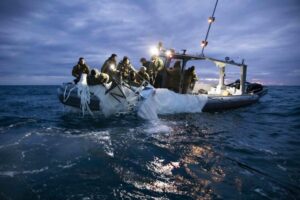
The Senate’s top defense appropriator has said he wants the fiscal year 2024 budget to include funding and plans to help the Pentagon avoid future intrusions into U.S. airspace following the recent spate of Chinese surveillance balloon incidents. Sen. Jon Tester (D-Mont.), chair of the Senate Appropriations Defense Subcommittee, and lawmakers on the panel pressed DoD officials during a hearing Thursday on modernization efforts to bolster airspace detection capabilities and the decision making process related to the tracking and eventual…

 By
By 











